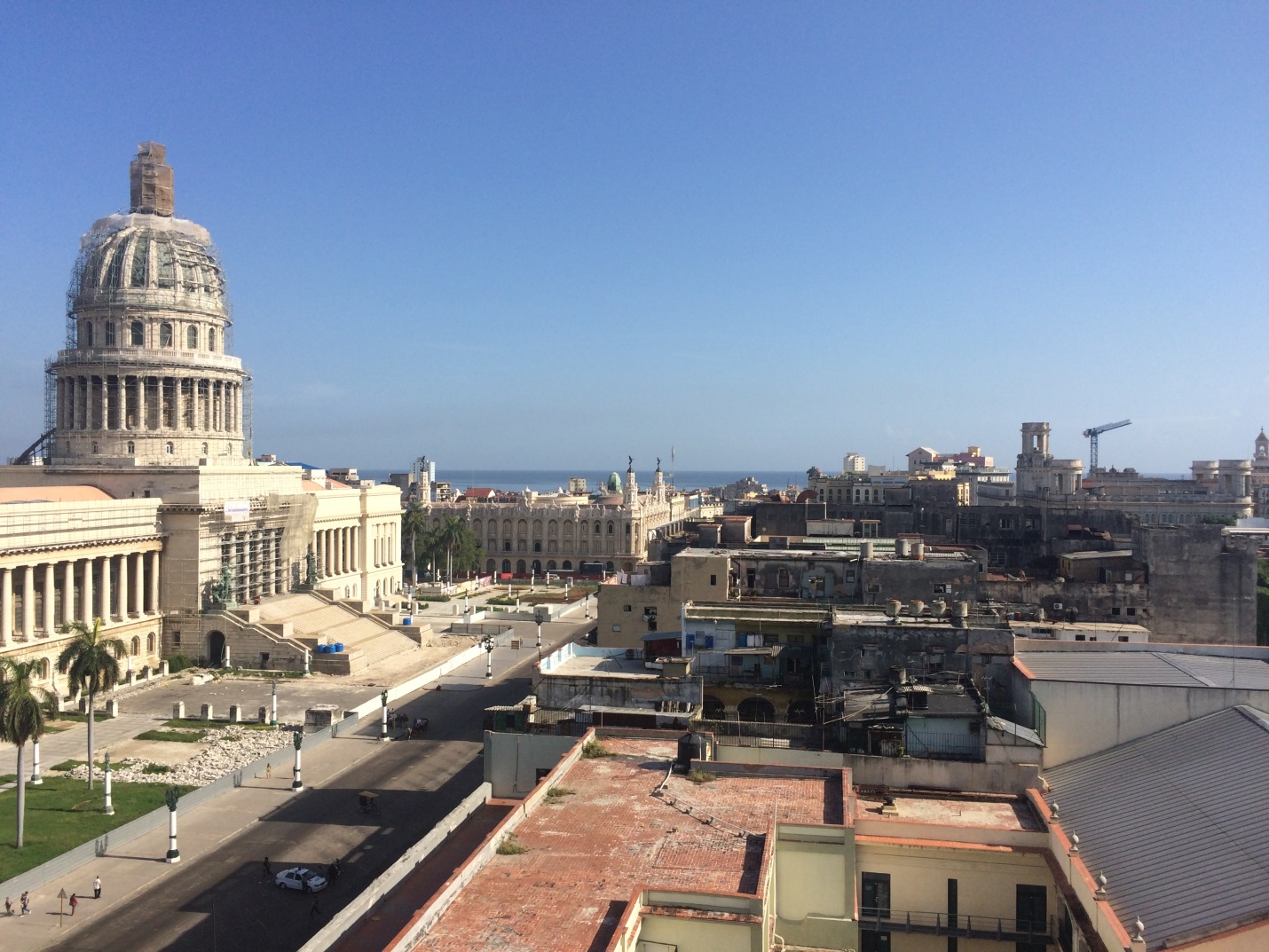Cuba – Observations Upon Arrival
 In the 1940s and early 1950s, Havana must have been a jewel of a city. Set against the beautiful Caribbean Sea, the Malecón offers the sea to one side and buildings across the boulevard – some restored, some new, but many crumbling after years of neglect. Perhaps that is the best word to describe the city – crumbling. Of course there are beautiful buildings (the National Capital Building and the National Theatre next door), but across the street, buildings are literally falling down. Much to their credit, Cuban authorities are restoring the most significant buildings that comprise their rich architectural patrimony. That said, much is left to be done and we can only hope that growing commercial contact with the outside world will bring more funds to make possible even more ambitious conservation initiatives.
In the 1940s and early 1950s, Havana must have been a jewel of a city. Set against the beautiful Caribbean Sea, the Malecón offers the sea to one side and buildings across the boulevard – some restored, some new, but many crumbling after years of neglect. Perhaps that is the best word to describe the city – crumbling. Of course there are beautiful buildings (the National Capital Building and the National Theatre next door), but across the street, buildings are literally falling down. Much to their credit, Cuban authorities are restoring the most significant buildings that comprise their rich architectural patrimony. That said, much is left to be done and we can only hope that growing commercial contact with the outside world will bring more funds to make possible even more ambitious conservation initiatives.
The streets too are generally in need of repair – the potholes give New Yorkers nothing to complain about. It’s quite surprising that the 1950s-era cars (again, some beautifully restored and maintained, and others less so) can drive the streets without further damage. But there are broad beautiful avenues, many with richly planted medians. Again, a city of contrasts and a city in transition.
On the drive from the airport to downtown Havana (about 25 minutes), my colleague, Richard Ingunza, immediately noticed the lack of advertising. The only billboards or signs posted recognized the glory and successes of the revolution. Also noted was the absolute lack of retail. In fact, in two and one-half days, I only saw two “stores.” One was a high-end kitchen appliance store in one of the two modern office building complexes we visited and the other was a “hole-in-the-wall” with racks of eggs and a line out the door (in fact, business was transacted from the door with patrons walking away with dozens of eggs in self-provided plastic shopping bags – talk about putting all of your eggs in one basket – no egg cartons here).
Despite the poor conditions of the roads and buildings, the people tell a different story. No one appears to be malnourished. No one (well, maybe we saw one person) appears to be homeless or destitute. Much to their credit, everyone we encountered was educated. And everyone we met from hotel bellmen to restaurant staff to our guide and driver to our affiliates working for HLB InterAudit seemed content and “happy.” In the evening, it was extraordinary to see the populace step out onto the streets to mingle, share stories and just enjoy the company of their neighbors. Animated conversations could be seen and heard. Children played and parents laughed, exchanged ideas and had heated discussions, much the same way as was occurring out across the Straits of Florida in neighborhoods across Miami and beyond. For us, Havana is a city of contrasts.
By Kimberlee Phelan, CPA, MBA, Practice Leader, WS+B’s International Services Group | 609.520.1188 | [email protected]

